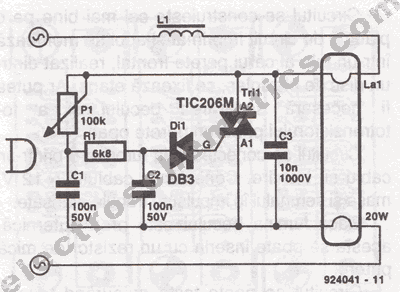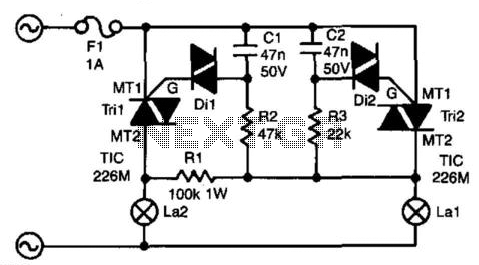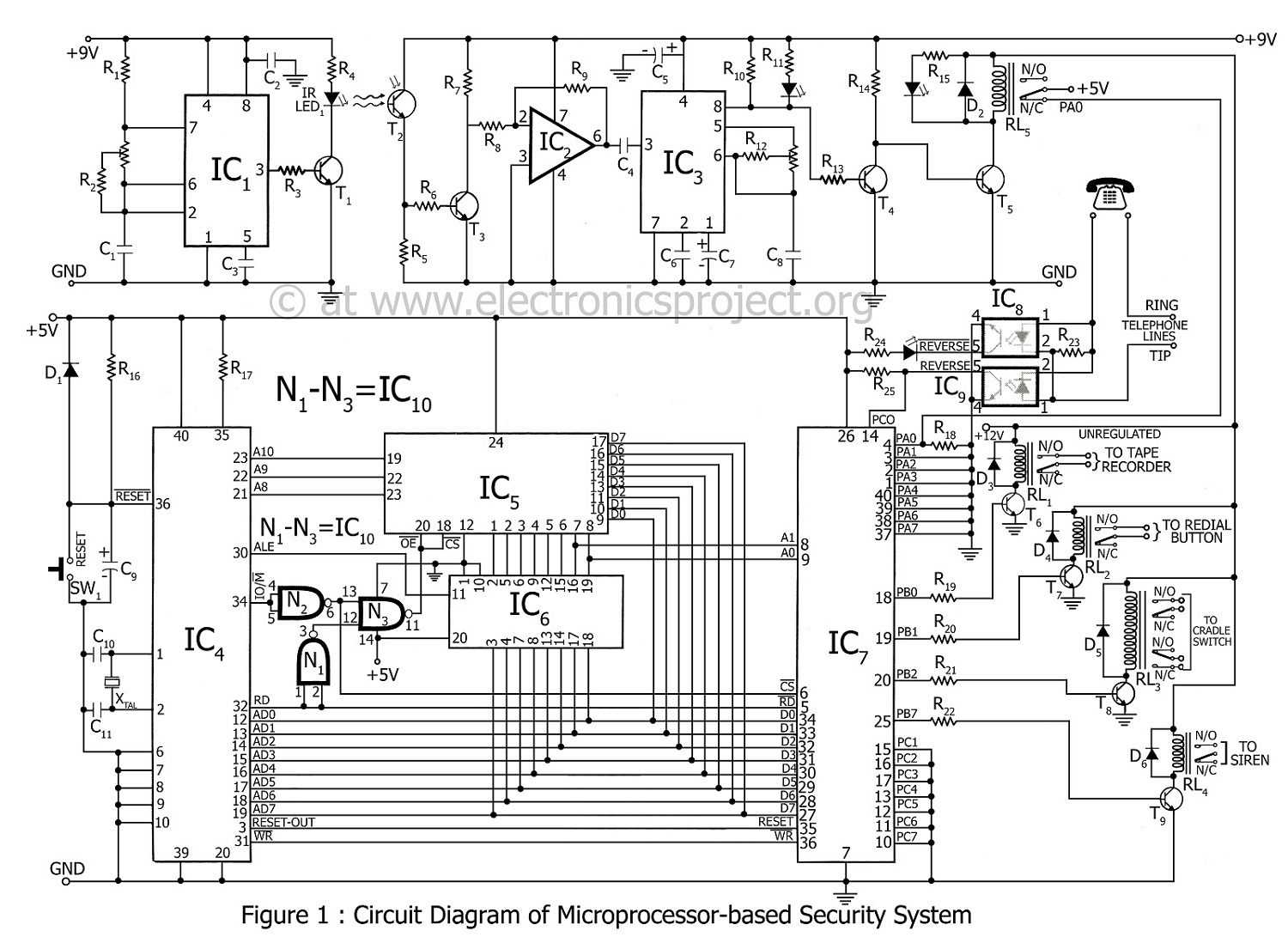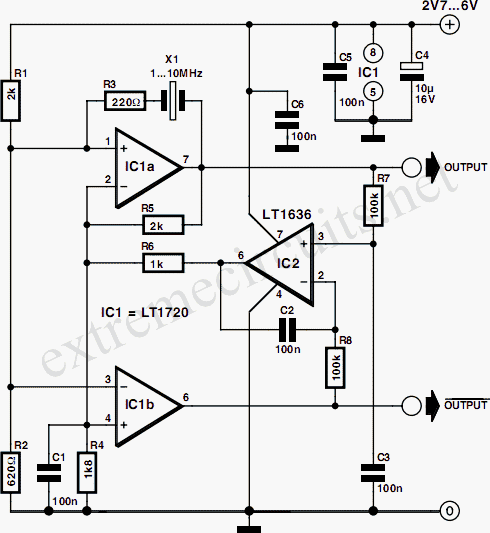
SensorCircuit Of Automatic Room Lights Based On The CD4017 IC
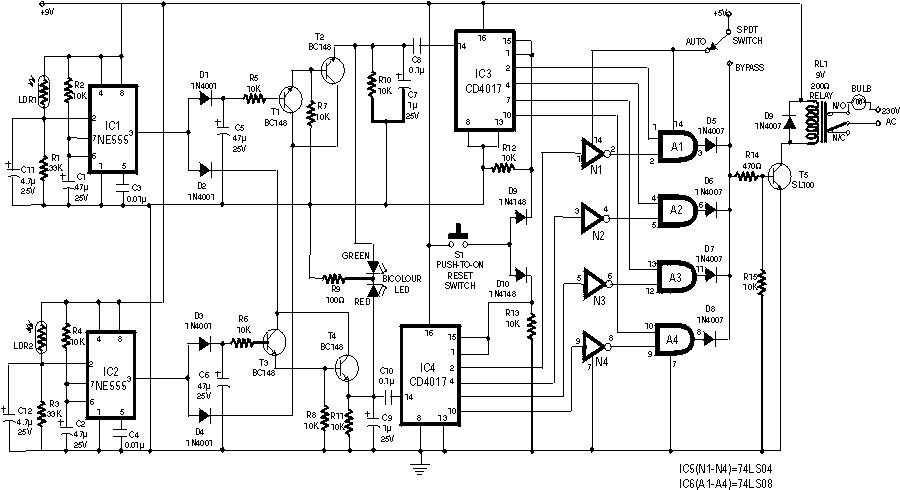
The following circuit illustrates the sensor circuit diagram for automatic room lights. This circuit is based on the CD4017 integrated circuit (IC) and features the use of two light-dependent resistors (LDRs).
The automatic room light circuit utilizes the CD4017 decade counter IC, which is designed to count pulses and drive multiple outputs. In this application, it functions as a control mechanism for the lights based on ambient light levels detected by the LDRs. The LDRs are positioned strategically to detect changes in light intensity; when the ambient light falls below a certain threshold, the resistance of the LDRs increases, triggering the circuit to activate the lights.
The circuit typically includes a comparator, which can be implemented using an operational amplifier (op-amp) or a simple transistor-based design. The output from the LDRs is fed into the comparator, which compares the voltage level against a reference voltage. When the voltage from the LDRs drops below the reference level, the comparator output changes state, signaling the CD4017 to activate the connected lighting load.
In addition to the basic components, the circuit may include a relay or a transistor to handle the higher current required by the lights, ensuring safe operation without damaging the sensitive IC. The circuit can also be equipped with adjustable resistors to fine-tune the sensitivity of the LDRs, allowing for customization based on the specific lighting conditions of the environment.
Overall, this automatic room light circuit provides an efficient solution for lighting control, enhancing convenience and energy savings by ensuring that lights are only activated in response to the presence or absence of natural light.The following circuit shows about Sensor Circuit Diagram Of Automatic Room Lights. This circuit based on the CD4017 IC. . Features: uses two LDRs, .. 🔗 External reference
The automatic room light circuit utilizes the CD4017 decade counter IC, which is designed to count pulses and drive multiple outputs. In this application, it functions as a control mechanism for the lights based on ambient light levels detected by the LDRs. The LDRs are positioned strategically to detect changes in light intensity; when the ambient light falls below a certain threshold, the resistance of the LDRs increases, triggering the circuit to activate the lights.
The circuit typically includes a comparator, which can be implemented using an operational amplifier (op-amp) or a simple transistor-based design. The output from the LDRs is fed into the comparator, which compares the voltage level against a reference voltage. When the voltage from the LDRs drops below the reference level, the comparator output changes state, signaling the CD4017 to activate the connected lighting load.
In addition to the basic components, the circuit may include a relay or a transistor to handle the higher current required by the lights, ensuring safe operation without damaging the sensitive IC. The circuit can also be equipped with adjustable resistors to fine-tune the sensitivity of the LDRs, allowing for customization based on the specific lighting conditions of the environment.
Overall, this automatic room light circuit provides an efficient solution for lighting control, enhancing convenience and energy savings by ensuring that lights are only activated in response to the presence or absence of natural light.The following circuit shows about Sensor Circuit Diagram Of Automatic Room Lights. This circuit based on the CD4017 IC. . Features: uses two LDRs, .. 🔗 External reference
